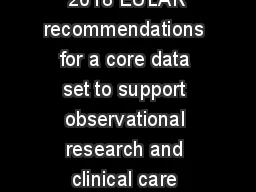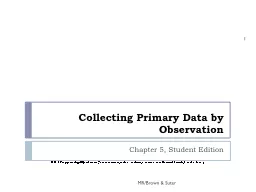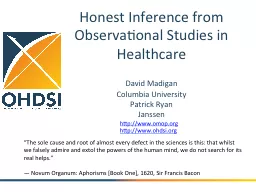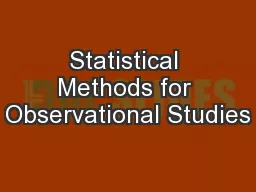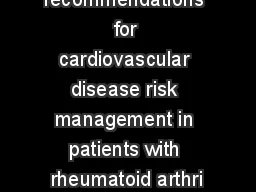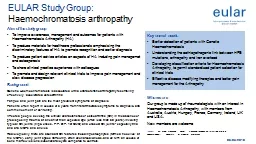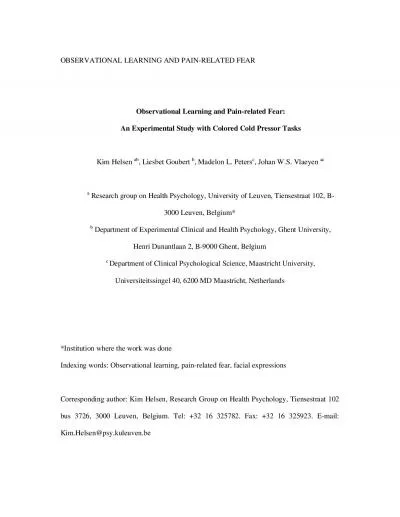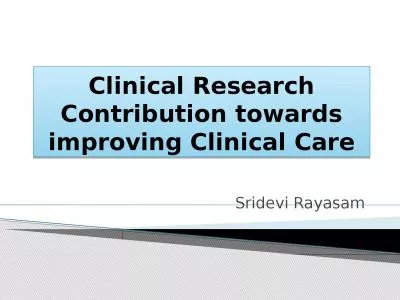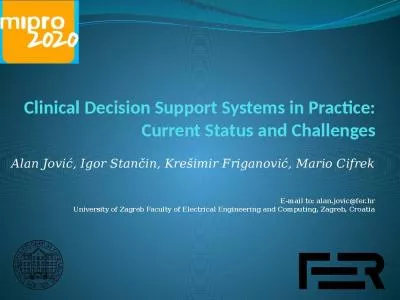PPT-2018 EULAR recommendations for a core data set to support observational research and
Author : calandra-battersby | Published Date : 2020-04-04
Aim 2 05112018 Giant cell arteritis GCA most common primary systemic vasculitis in western countries Lifetime risk 10 for women and 05 for men over the age of 50
Presentation Embed Code
Download Presentation
Download Presentation The PPT/PDF document " 2018 EULAR recommendations for a core d..." is the property of its rightful owner. Permission is granted to download and print the materials on this website for personal, non-commercial use only, and to display it on your personal computer provided you do not modify the materials and that you retain all copyright notices contained in the materials. By downloading content from our website, you accept the terms of this agreement.
2018 EULAR recommendations for a core data set to support observational research and: Transcript
Download Rules Of Document
" 2018 EULAR recommendations for a core data set to support observational research and"The content belongs to its owner. You may download and print it for personal use, without modification, and keep all copyright notices. By downloading, you agree to these terms.
Related Documents

